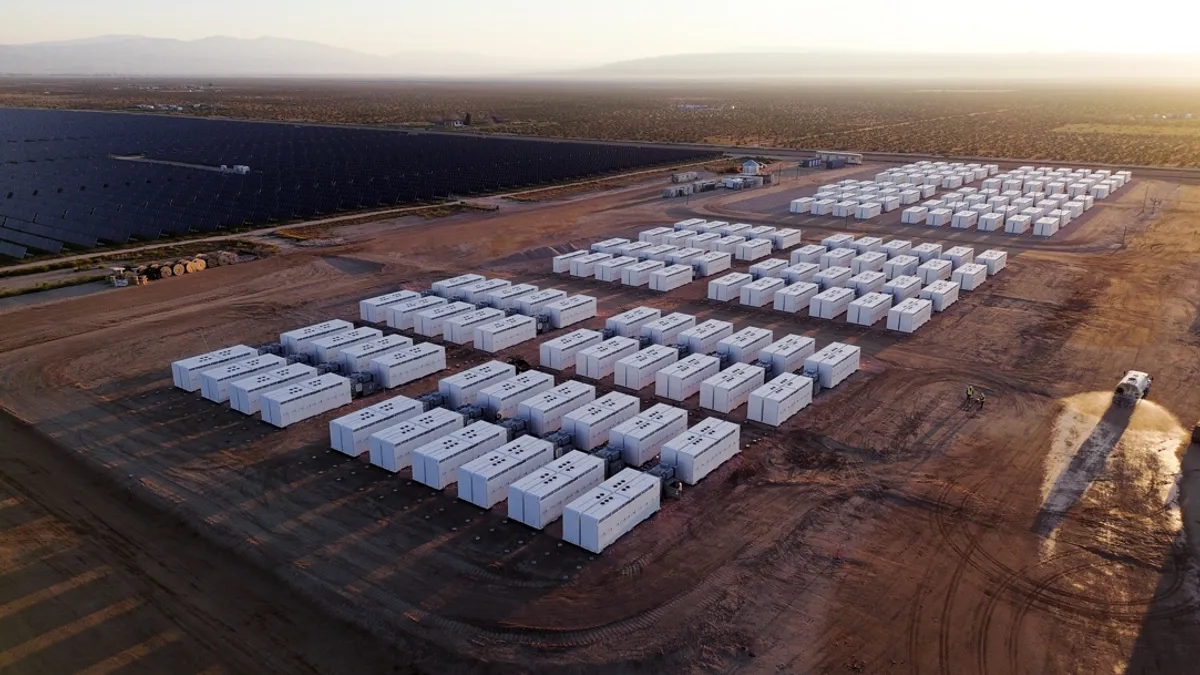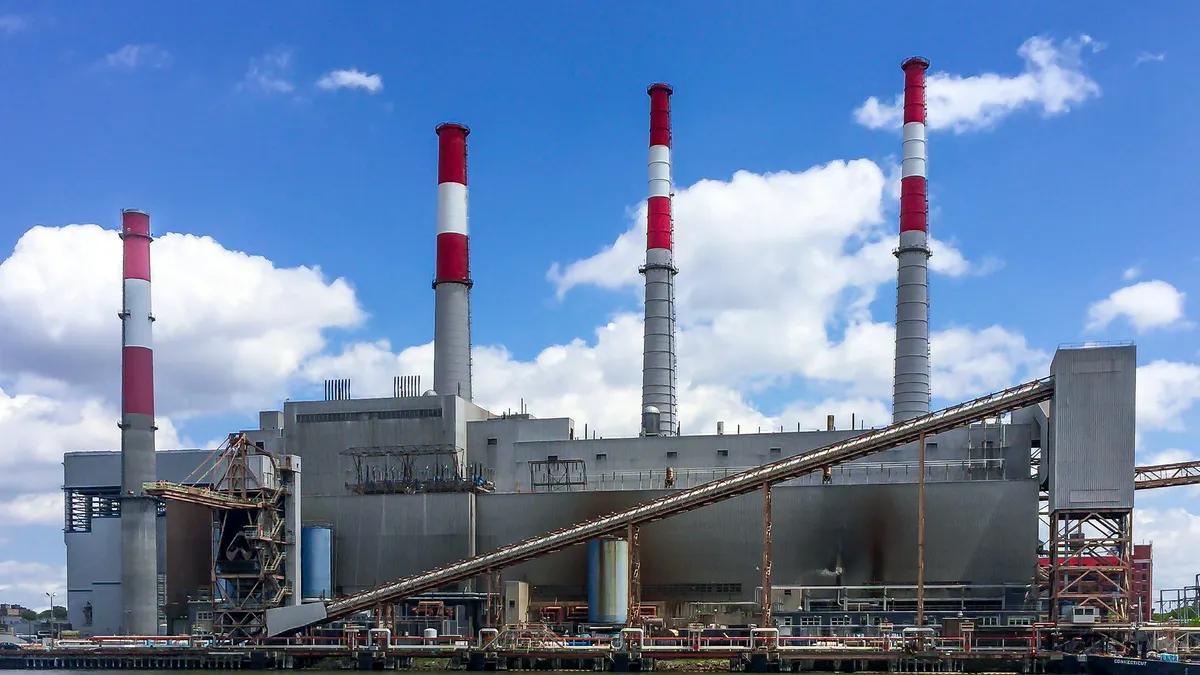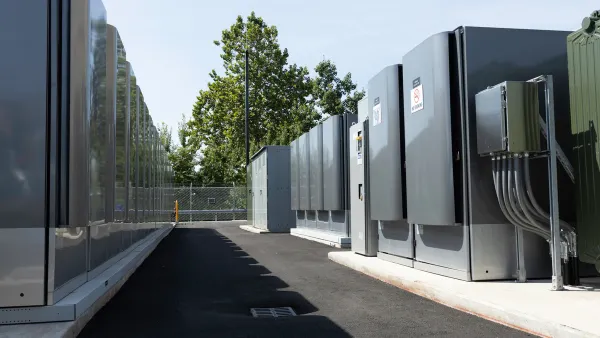“Demand response” has traditionally been a fairly simple concept: When demand spikes, utilities pay some customers to reduce their load.
The assumptions in that exchange were pretty simple: The customers involved had flexible load, and the price benefits that customers would get on their utility bills when they signed up for the program more than made up for whatever losses or inconvenience they incurred. When the utility put in the call, the customer started using less power.
But technology has a way of changing things, and a bid into the California ISO real-time market earlier this month highlights the way old definitions are unraveling in the new utility world. In a supply-side pilot run by Pacific Gas & Electric, storage developer Stem Inc. bid in an aggregated storage load that in practice acted as demand response.
The pilot is the first in California's energy markets, according to Stem, and aligns with California's push for more battery storage and overhauling its utility system to meet Gov. Jerry Brown (D)'s call for 50% renewables by 2030.
Aiming to further CAISO's use of demand response in its wholesale market, the pilot could help bolster flexibility and reliability of the grid.
“We're sending energy to serve the clients' load, so it looks to the grid like load going down,” said Ted Ko, Stem's director of policy. “It's a new form of demand response, but it looks to the grid like demand response.”
Get that?
Stem installed battery storage at six client sites that allows the customers to charge up when electricity prices were low and use it when power was expensive, as well as providing a redundant power source to guard against outages. And by participating in the supply-side pilot, Stem was able to also use the storage as a demand response resource in the CAISO wholesale market.
“Bidding demand response into wholesale markets is not a particularly new concept,” Ko said. “But aggregating distributed fleets into wholesale markets is new, and I actually think we're one of the first places anywhere around the country to do this.”
The underlying idea is one called “proxy demand response,” (PDR). The Federal Energy Regulatory Commission (FERC) ordered the California grid operator to create the product in 2010, though it is just beginning to compete. PDR broadens the range of distributed resources which can be aggregated by using different telemetry and communication standards, essentially making it cheaper for smaller resources to participate.
“You're starting to see wholesale markets across the country realize that when they are looking for capacity or energy," Ko said. "It can come from the traditional large-scale generation or storage, but it can also come from an aggregated fleet of distributed resources that can be equally cost competitive,"
“It opens up a lot more resources for the market," he added, "and all the markets would like to see a lot more resources competing, because that's just going to drive down costs for everybody and make a lot more resources available to balance the grid.”
Policies, business models still in flux
Other markets have similar concepts policies in place, but Ko said California's Proxy Demand Response product made it easier for aggregators to access wholesale markets.
“PDR made it a lot easier from a metering and telemetry standpoint, made it easier for smaller resources to participate,” Ko said. “In a lot of other markets the requirements for metering and telemetry may be cost prohibitive for them to do this.”
Stem's successful real-time bid was drawn from six customers with storage on site. Market rules say the aggregator must be able to commit at least 100 kW concentrated within one geographic region.
While the dispatch of the power is automated, Ko said the bids are still being put in manually. And just how the revenue streams will ultimately work is still being determined. For the moment, Stem is simply passing on the demand response savings directly to the customer, but a variety of models are being considered.
“In the future there will be different arrangements that may go towards reducing the overall cost of the system up front, or it could be some kind of shared revenue model,” Ko said. “That hasn't been settled yet. In this pilot, we've just been passing the revenue stream back to the customer.”
A long process for grid operators
All around the country, states and regional operators are looking at ways to bolster grid reliability and flexibility, while updating business models. California's work on distributed resources is similar to processes going on in New York, Massachusetts, Hawaii, Oregon, Minnesota and other ongoing efforts to integrate renewables and storage, to develop business models and rate schemes that will move utilities into a distributed future.
"California has some active initiatives that are leading the country in some ways, to open up these markets," Ko said. But all around the United States, regulators are trying to bring a variety of resources together into a cohesive model and market.
Texas is one of the latest states to undertake a grid modernization effort. In a white paper issued last month, the Energy Reliability Council of Texas' Distributed Resource Energy & Ancillaries Market (DREAM) Task Force began conceptualizing a similar structure and process, to allow distributed resources to participate in a variety of ways.
Electric systems are dealing with "dramatic change," and the DREAM concept paper was "intended to serve as a catalyst for development of new protocols and other market rules affecting DERs in the ERCOT region and ERCOT wholesale markets," ERCOT said.
Right now, the grid operator is focused on two major goals that are built around two primary goals: data collection needed to ensure reliability, and the development of a market framework to accommodate distributed resources. ERCOT envisions new settlement options under a variety of distributed resource scenarios that would allow for greater market participation.
In California, it took about five years to go from the concept behind PDR to Stem's bid. While the technology is there, Ko said it is policy and process that in practice makes the industry slow to evolve.
"Getting the regulatory regime and policies correct and having everyone get used to the processes involved" are some of the basic difficulties stakeholders around the nation will have to deal with.
"Once you've dispatched, how do you settle accounts, get paid for what you did, and have the markets verify you did what you said you did?" Ko said. "All those processes, from meter data to settlement, have to come together to get it to work."





















